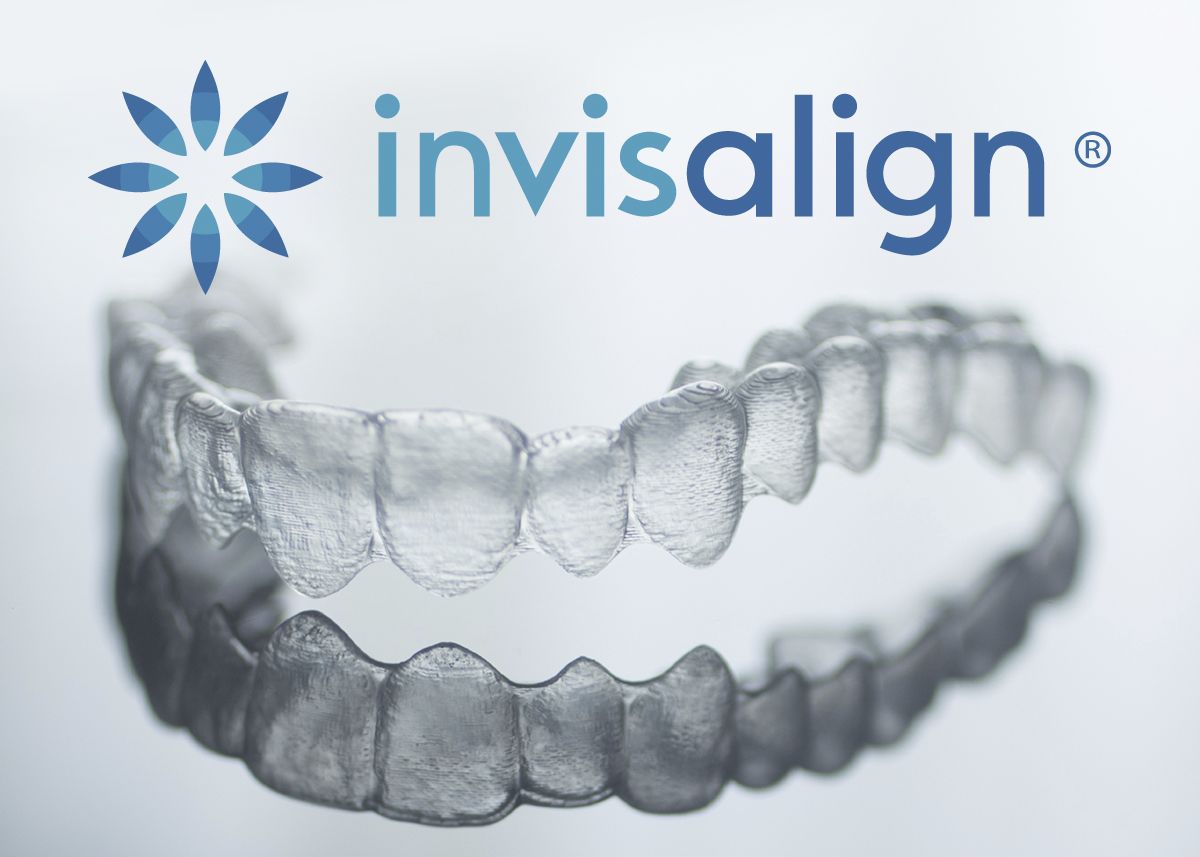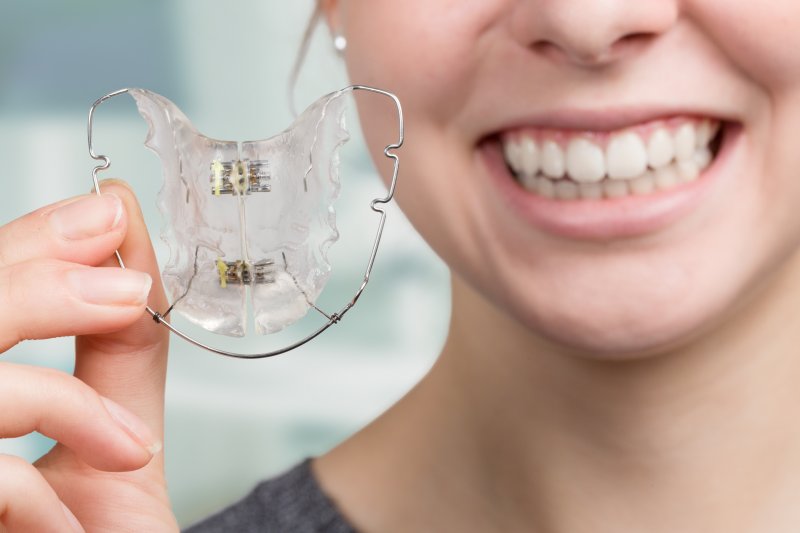Preserving Oral Health While Making Use Of Invisalign: Tips for a Smooth Experience
Preserving Oral Health While Making Use Of Invisalign: Tips for a Smooth Experience
Blog Article
Invisalign vs. Traditional Dental braces: Which Alternative Is Right for You?
When taking into consideration orthodontic therapy, the selection between Invisalign and typical braces offers several important elements that merit careful evaluation. Invisalign provides a discreet option with removable aligners, while conventional dental braces offer an extra visible yet effective option for extreme misalignment. Each alternative incorporates unique advantages and drawbacks connected to looks, convenience, therapy duration, and price. Comprehending these nuances is essential for making an informed choice that lines up with your personal choices and way of life. The concern stays: which option will best fulfill your orthodontic demands and expectations?
Review of Therapy Choices

In comparison, conventional dental braces contain metal brackets and wires that are bound to the teeth. This method applies continual stress gradually to achieve alignment. While effective for intricate orthodontic concerns, typical dental braces call for normal check outs for modifications and can pose challenges in keeping oral health as a result of the difficulty of cleaning about cables and braces.
Both choices have their values, and the choice typically depends upon details oral conditions, lifestyle preferences, and client conformity. Inevitably, getting in touch with an orthodontic specialist is important for identifying the most suitable therapy strategy tailored to private demands. Comprehending the nuances of each alternative can dramatically influence the total success of orthodontic therapy.
Aesthetic Factors To Consider
A significant factor affecting the option between Invisalign and typical braces is the aesthetic charm each therapy offers. Invisalign aligners are crafted from clear plastic, making them practically invisible when put on.
On the other hand, conventional dental braces include steel braces and wires, which can be much more noticeable. While advancements in orthodontic technology have actually caused the advancement of smaller sized braces and colored elastics, traditional braces still preserve an even more conspicuous profile. For some people, the visibility of braces may deter them from seeking essential therapy.
Eventually, the choice in between Invisalign and conventional braces may rest on individual preferences concerning aesthetics. Patients that focus on discretion usually lean toward Invisalign, while those that are less worried regarding exposure might opt for typical braces. Comprehending the visual implications of each alternative is essential for making an informed decision that aligns with one's way of life and preferences.
Comfort and Convenience

In regards to ease, Invisalign aligners are removable, enabling individuals to enjoy their favored foods without restriction and preserve ideal dental hygiene. Cleaning and flossing are streamlined, as the aligners can be secured throughout these regimens, whereas standard dental braces call for careful maneuvering around brackets and wires.
In comparison, standard dental braces necessitate regular adjustments, making them less convenient for those with active schedules. On the whole, the comfort and ease of Invisalign make it an enticing choice for several individuals looking for orthodontic therapy.
Treatment Duration and Efficiency
While both Invisalign and conventional dental braces are reliable in correcting oral misalignments, the duration of therapy can vary considerably between both options. Generally, Invisalign treatment can take anywhere from 12 to 18 months, depending upon the intricacy of the case. The clear aligners function by progressively shifting teeth into their preferred placements, and normal follow-ups with an orthodontist assistance make certain development stays on course.
In contrast, traditional braces frequently require a longer dedication, typically varying from 18 months to 3 years. This is due to their set nature and making use of braces and cords, which can be a lot more effective for complex cases and serious imbalances (Invisalign). The therapy performance of standard braces is well-documented, as they enable specific modifications and better control over tooth movement
Inevitably, the choice between Invisalign and typical braces might depend upon both the anticipated therapy duration and the particular dental concerns handy. Consulting with an orthodontist is crucial, as they can provide tailored recommendations based upon specific needs, making certain the selected method aligns with desired you can try this out end results and durations.
Price Contrast and Insurance Policy Options
Cost plays a substantial function in the decision-making process for individuals considering orthodontic therapy, whether choosing Invisalign or typical dental braces. Typically, the expense of Invisalign ranges from $3,000 to $8,000, while standard dental braces typically set you back in between $2,000 and $6,000. Variables affecting these costs consist of the intricacy of the instance, the period of treatment, and geographical location.
Insurance policy coverage can significantly affect out-of-pocket costs. Numerous oral insurance policy strategies provide partial insurance coverage for orthodontic therapies, however the specifics can differ commonly. It is vital for patients to evaluate their insurance plan my company to establish the level of coverage for either alternative. Typically, conventional braces might be more regularly covered by insurance coverage strategies contrasted to Invisalign, which some insurance providers categorize as an aesthetic procedure.
Furthermore, several orthodontic methods provide adaptable layaway plan, making both treatment choices more obtainable. Clients must inquire concerning potential funding choices and discount rates for upfront settlements. Reviewing the overall cost, including insurance coverage advantages and layaway plan, is vital for making an educated decision that straightens with both aesthetic choices and spending plan factors to consider.

Final Thought
In recap, the option in between Invisalign and typical dental braces pivots on multiple elements, consisting of aesthetic preferences, comfort, therapy period, and cost. Invisalign supplies a discreet, removable choice that facilitates oral hygiene and nutritional versatility, while standard dental braces might be preferable for complex oral issues and frequently come with a reduced price point. Ultimately, examination with an orthodontist is important to analyze visit our website individual situations and identify the most appropriate therapy option for achieving optimum dental placement.
When thinking about orthodontic therapy, the option in between Invisalign and conventional braces offers numerous crucial factors that warrant cautious assessment.Contrasting Invisalign and traditional braces exposes distinct therapy choices for orthodontic improvement.While both Invisalign and conventional braces are effective in remedying dental misalignments, the period of therapy can vary substantially in between the two alternatives.Expense plays a considerable duty in the decision-making procedure for individuals thinking about orthodontic treatment, whether opting for Invisalign or standard braces.In summary, the selection in between Invisalign and conventional braces hinges on numerous variables, including aesthetic choices, convenience, treatment duration, and cost.
Report this page